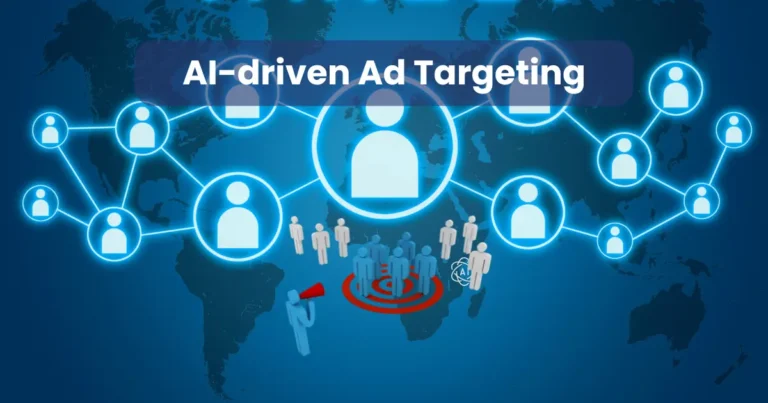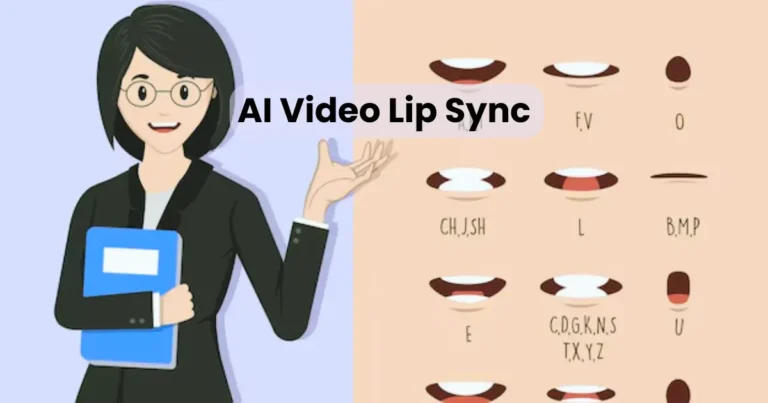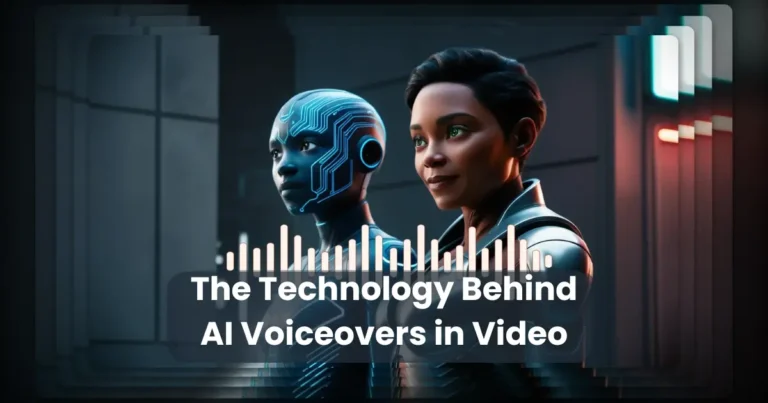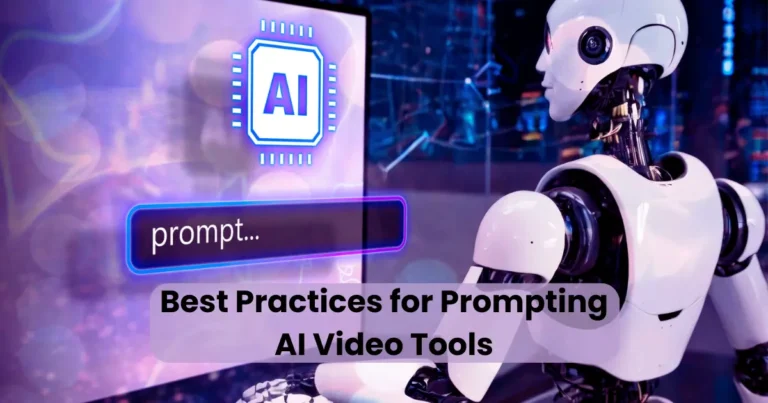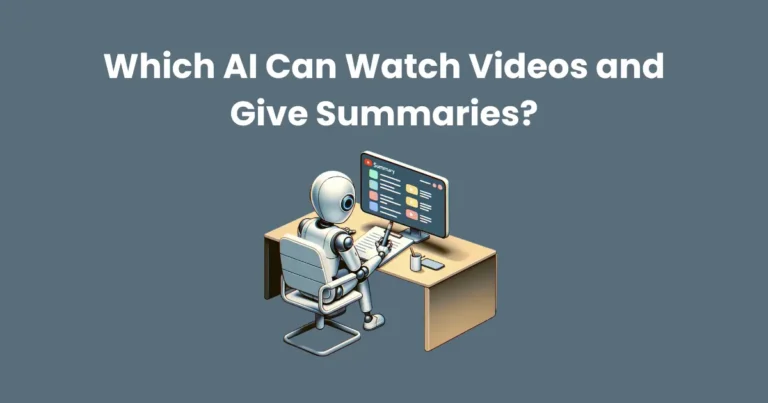AI Video Editing Software: The Future of Automated Video Production

Contents
- 1 How AI Video Editing Software Works
- 2 Top AI Video Editing Software in 2025
- 3 Key Features of AI Video Editing Software
- 3.1 1. Auto-Captioning and Subtitle Generation
- 3.2 2. Background Removal and Object Detection
- 3.3 3. AI-Based Color Correction and Enhancement
- 3.4 4. Voice and Sound Enhancement
- 3.5 5. Smart Scene Detection and Auto-Cutting
- 3.6 6. AI-Powered Video Upscaling and Motion Smoothing
- 3.7 7. AI-Generated Video Effects and Animations
- 4 Advantages of Using AI Video Editing Software
- 5 Challenges and Limitations of AI Video Editing Software
- 6 Choosing the Best AI Video Editing Software
- 7 Future of AI in Video Editing
AI video editing software has revolutionized the video production industry, making the editing process faster, smarter, and more efficient. With artificial intelligence, tasks such as scene detection, background removal, and audio enhancement are automated, allowing creators to focus on storytelling rather than manual editing. Whether for professional filmmakers, content creators, or social media influencers, AI-powered tools offer high-quality results with minimal effort.
As video content continues to dominate digital platforms, the demand for AI video editing software has grown significantly. By integrating machine learning algorithms, these tools analyze footage, apply intelligent edits, and enhance video quality without requiring advanced technical skills. This advancement not only saves time but also ensures consistency and precision in video production. In this article, we will explore how AI video editing software works, its key features, advantages, and the best tools available in 2025.
How AI Video Editing Software Works
AI video editing software leverages machine learning and artificial intelligence to automate various editing processes, making video production more efficient. By analyzing footage, detecting patterns, and applying intelligent edits, AI reduces the need for manual intervention while maintaining high-quality output.
Automated Editing Features
AI-powered editing tools streamline tasks such as:
- Scene Detection – AI identifies scene changes and automatically splits footage into segments.
- Smart Cropping – The software adjusts framing based on the subject’s position, ensuring better composition.
- Auto-Transitions – Smooth transitions between clips are applied based on content analysis.
Machine Learning and AI Algorithms
Through deep learning models, AI video editing software continuously improves its accuracy. It learns from user preferences and historical editing patterns to provide personalized suggestions, making editing more intuitive and precise.
By combining automation with machine learning, AI video editing software enhances efficiency, allowing users to create professional-quality videos with minimal effort.
Top AI Video Editing Software in 2025
As AI technology continues to evolve, several AI-powered video editing tools have gained popularity for their advanced features and automation capabilities. These tools streamline editing tasks, enhance creativity, and improve video production efficiency. Below are some of the best AI video editing software options available in 2025.

1. Adobe Premiere Pro (AI-Powered Editing)
Adobe Premiere Pro remains a leading choice for professional video editing, integrating powerful AI-driven features:
- Adobe Sensei AI automates color correction, audio enhancement, and scene detection.
- Auto Reframe optimizes videos for different social media platforms.
- AI Speech-to-Text generates accurate subtitles instantly.
2. Final Cut Pro (Apple’s AI Video Editing Solution)
Apple’s Final Cut Pro continues to be a top contender for AI-powered editing, offering:
- Smart Conform for automatic aspect ratio adjustments.
- Neural Engine AI for improved object tracking and motion smoothing.
- AI-Driven Audio Cleanup to remove background noise seamlessly.
3. Runway ML (Creative AI Video Editing)
Runway ML is a cutting-edge AI video editing tool designed for creators who want AI-assisted effects and automation:
- AI-powered background removal for green screen effects without a physical backdrop.
- Text-to-Video generation using AI models.
- Motion Tracking and Object Detection for enhanced storytelling.
4. Descript (AI-Powered Transcription and Editing)
Descript revolutionizes video editing by combining AI-powered transcription with video editing features:
- Automatic speech-to-text conversion for easy editing.
- Overdub AI for generating voiceovers with synthetic voice models.
- AI-based filler word removal for seamless dialogue flow.
5. CapCut (User-Friendly AI Video Editor)
CapCut, developed by ByteDance, is popular for its intuitive AI-driven editing tools:
- Auto Captions for instant subtitles.
- AI-Generated Effects for enhancing visual aesthetics.
- One-Click Background Music Syncing for perfectly timed audio.
6. Magisto (AI for Automated Video Creation)
Magisto is an AI-powered tool ideal for marketers and content creators:
- AI Video Storytelling to generate professional edits with minimal effort.
- Smart Music Integration that automatically syncs with the footage.
- AI-Driven Video Templates for quick editing solutions.
The rise of AI video editing software in 2025 has transformed the way videos are created. With automation, smart editing, and AI-driven effects, these tools cater to both beginners and professionals. Choosing the right AI video editing software depends on specific needs, whether for high-end production, social media content, or quick edits.
Key Features of AI Video Editing Software
AI video editing software offers a range of intelligent features designed to enhance efficiency, improve video quality, and streamline the editing process. These tools use machine learning and automation to reduce manual effort while ensuring professional results. Below are some of the most essential features of AI-powered video editing software.

1. Auto-Captioning and Subtitle Generation
- AI automatically generates accurate subtitles and captions by transcribing speech.
- Multilingual support enables captions in various languages for global reach.
- Real-time speech-to-text conversion ensures faster post-production.
2. Background Removal and Object Detection
- AI-powered tools can remove backgrounds without using a green screen.
- Object tracking allows editors to follow moving elements seamlessly.
- Automatic blur effects help maintain focus on important subjects.
3. AI-Based Color Correction and Enhancement
- Intelligent color grading adjusts brightness, contrast, and saturation.
- AI suggests optimal color tones based on the scene’s mood.
- Auto white balance ensures consistent color accuracy.
4. Voice and Sound Enhancement
- AI removes background noise for clearer audio quality.
- Automatic volume leveling ensures balanced sound throughout the video.
- AI-generated voiceovers and text-to-speech features streamline narration.
5. Smart Scene Detection and Auto-Cutting
- AI identifies key scenes and cuts footage automatically.
- Jump cuts and transitions are optimized for smooth storytelling.
- Auto-reframe adjusts video dimensions for different platforms (e.g., YouTube, Instagram, TikTok).
6. AI-Powered Video Upscaling and Motion Smoothing
- Low-resolution videos can be upscaled to higher quality using AI.
- Motion smoothing enhances frame rate for fluid playback.
- AI-based stabilization reduces shaky footage.
7. AI-Generated Video Effects and Animations
- Automated effects like slow-motion, time-lapse, and filters enhance creativity.
- AI-driven animations bring static images or text to life.
- Smart overlays add dynamic elements like animated titles and transitions.
AI video editing software simplifies video production by automating tedious tasks while enhancing creativity. From auto-captioning to AI-powered background removal and smart scene detection, these tools make high-quality video editing accessible to all users. As AI continues to evolve, its features will only become more advanced, transforming the future of video editing.
Advantages of Using AI Video Editing Software
AI video editing software has transformed the video production industry by automating complex tasks, enhancing efficiency, and improving overall video quality. With AI-driven tools, editors can produce high-quality videos with minimal effort. Below are some key advantages of using AI-powered video editing software.

1. Faster Video Production
- AI automates tedious editing tasks such as trimming, color correction, and audio balancing.
- Smart scene detection speeds up the editing process by identifying key moments automatically.
- AI-powered auto-captions and subtitles eliminate the need for manual transcription.
2. Cost-Effective Editing Solutions
- AI reduces the need for professional editors, making video production more affordable.
- Free and budget-friendly AI video editing tools offer advanced features without expensive subscriptions.
- AI-generated templates and effects eliminate the need for expensive custom animations.
3. Enhanced Creativity with AI Assistance
- AI-powered effects and animations help create engaging visuals effortlessly.
- Smart suggestions for transitions, music, and color grading improve video storytelling.
- AI-generated voiceovers and sound enhancement tools enhance audio quality.
4. User-Friendly Editing for Beginners
- No advanced editing skills are required to create professional-looking videos.
- AI simplifies complex editing tasks, making high-quality video production accessible.
- Automated workflows allow beginners to edit videos efficiently with minimal learning.
5. Improved Video and Audio Quality
- AI-based stabilization eliminates shaky footage for a smoother viewing experience.
- AI-powered noise reduction removes background distractions for clearer audio.
- AI-enhanced upscaling improves low-resolution videos to HD or 4K quality.
6. Optimized Videos for Multiple Platforms
- AI automatically resizes and reformats videos for different social media platforms.
- Smart cropping ensures that videos fit perfectly for YouTube, Instagram, TikTok, and Facebook.
- AI-driven aspect ratio adjustments save time when creating content for various audiences.
AI video editing software enhances efficiency, reduces costs, and improves content quality. Whether for professional filmmakers, content creators, or marketers, AI-powered tools simplify the editing process while ensuring high-quality results. As AI continues to advance, video editing will become even more accessible and innovative.
Challenges and Limitations of AI Video Editing Software
While AI video editing software offers automation, efficiency, and enhanced creativity, it also comes with certain challenges and limitations. Understanding these drawbacks is essential for users who rely on AI-powered tools for video production.

1. Accuracy and Quality Concerns
- AI-generated edits may lack the precision and artistic judgment of human editors.
- Automated scene detection and transitions might not always align with the intended storytelling style.
- AI-based voice recognition for captions and subtitles may produce errors, requiring manual corrections.
2. Limited Customization and Creativity
- Pre-set AI templates and automated effects can lead to generic-looking videos.
- AI tools may not offer the same level of creative control as manual editing software.
- Complex visual effects and detailed post-production work often require human intervention.
3. Dependency on AI Tools
- Over-reliance on AI can reduce skill development in traditional video editing techniques.
- AI-generated edits might not always match the personal style or branding of a creator.
- AI tools require high-quality input; poorly recorded footage may not be significantly improved.
4. Ethical and Copyright Concerns
- AI-generated voiceovers and deepfake technology raise ethical concerns about content authenticity.
- AI-powered content creation may lead to intellectual property disputes, especially with automated scriptwriting and voice cloning.
- Some AI models use copyrighted material for training, creating legal and ethical challenges.
5. Performance and Hardware Limitations
- Advanced AI video editing software may require powerful hardware for optimal performance.
- Processing large video files with AI tools can be resource-intensive and slow on lower-end devices.
- Cloud-based AI editors depend on internet connectivity, which may affect workflow efficiency.
6. Subscription Costs and Licensing Issues
- Premium AI video editing software often comes with expensive subscription plans.
- Some AI tools restrict access to certain features unless users opt for paid versions.
- Licensing terms for AI-generated content can sometimes be unclear, especially for commercial use.
While AI video editing software enhances efficiency, it is not without its limitations. Issues related to accuracy, customization, ethical concerns, and hardware requirements must be considered before fully integrating AI into the video production workflow. As AI technology advances, these challenges may be addressed, making AI-driven editing even more reliable and effective.
Choosing the Best AI Video Editing Software
With numerous AI video editing software options available, selecting the right tool depends on factors such as budget, features, ease of use, and intended purpose. Below are key considerations to help users make an informed decision.

1. Factors to Consider
Before choosing AI video editing software, consider the following:
- Editing Features: Look for AI-driven capabilities like auto-captioning, scene detection, background removal, and voice enhancement.
- User-Friendliness: The software should be easy to navigate, especially for beginners.
- Customization Options: AI should offer flexibility, allowing manual adjustments when needed.
- Performance & Speed: Choose software that efficiently processes large video files without lag.
- Platform Compatibility: Ensure the software works on your device (Windows, macOS, or cloud-based).
- Export Formats & Resolution: Look for tools that support high-quality exports (HD, 4K, or even 8K).
2. Free vs. Paid AI Video Editing Software
Best Free AI Video Editing Software
- CapCut: Great for quick social media edits with AI-powered effects.
- DaVinci Resolve: Offers AI-based color correction and motion tracking.
- HitFilm Express: Features AI-assisted VFX and smart editing tools.
Best Paid AI Video Editing Software
- Adobe Premiere Pro: Industry-leading software with AI-driven automation (Adobe Sensei).
- Final Cut Pro: Apple’s AI-enhanced editing tool for professionals.
- Runway ML: A creative AI-powered platform for real-time video generation.
3. Best AI Video Editing Software for Different Users
- For Professional Filmmakers: Adobe Premiere Pro, Final Cut Pro, DaVinci Resolve
- For Social Media Creators: CapCut, Magisto, InVideo
- For Beginners: Canva Video, Descript, Animoto
- For Businesses & Marketing: Runway ML, Synthesia (AI video generation), Pictory
The best AI video editing software depends on individual needs and skill levels. While free options provide basic AI editing, premium tools offer advanced automation and customization. By considering factors such as features, usability, and cost, users can find the perfect AI-powered video editor for their workflow.
Future of AI in Video Editing
AI technology is continuously transforming the video editing industry, making the process faster, smarter, and more intuitive. As artificial intelligence advances, the future of AI in video editing promises even greater automation, enhanced creativity, and improved accessibility for all users.

1. Advancements in AI Video Editing Technology
- Real-Time AI Editing: Future AI tools will allow instant edits, eliminating rendering delays.
- AI-Generated Visual Effects: Deep learning will enable hyper-realistic VFX and CGI creation.
- Improved AI-Based Image & Video Upscaling: AI will enhance low-resolution videos to 4K and beyond with greater accuracy.
- Better AI Voice and Lip-Syncing: AI-generated voiceovers and real-time lip-syncing will become more natural.
2. AI-Powered Video Creation Without Cameras
- Text-to-Video AI Tools: Platforms like Runway ML and Synthesia will generate high-quality videos from text descriptions.
- Deepfake and AI-Cloned Avatars: AI will create realistic virtual presenters for content marketing and education.
- AI-Based Virtual Sets: Backgrounds and environments will be generated without the need for green screens.
3. Personalized & Adaptive Editing
- AI Learning User Preferences: AI will adapt to individual editing styles for customized video production.
- Smart Editing Suggestions: AI will recommend edits based on audience engagement data and trends.
- Automatic Storytelling: AI will analyze footage and create compelling narratives automatically.
4. Ethical and Legal Considerations
As AI-generated content becomes more advanced, concerns regarding deepfakes, copyright issues, and misinformation will increase. Regulations and ethical guidelines will be necessary to prevent misuse of AI-driven video editing technologies.
Conclusion
AI video editing software has revolutionized the way videos are created, making the process faster, more efficient, and accessible to a broader audience. By automating tasks such as scene detection, background removal, color correction, and voice enhancement, AI-powered tools allow creators to focus on storytelling rather than manual editing.
The growing capabilities of AI video editing software have benefited professionals, content creators, and businesses alike. While these tools offer significant advantages, challenges such as accuracy limitations, dependency on AI, and ethical concerns must be considered. As AI technology continues to advance, the future of video editing will become even more innovative, enabling real-time automation, AI-generated visuals, and personalized editing experiences.
By choosing the right AI video editing software based on individual needs, users can maximize efficiency and creativity in video production. As AI reshapes the industry, it will continue to enhance video quality, reduce editing time, and unlock new possibilities for content creation.

